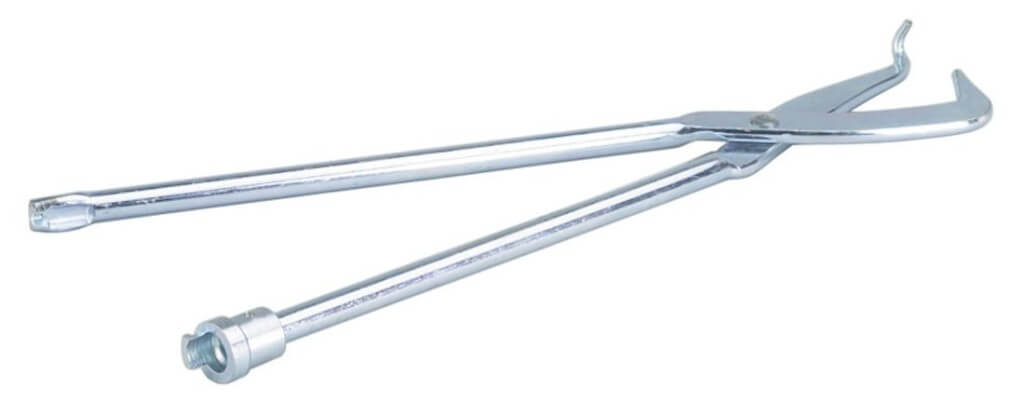Brake spring removal tools — How to remove drum brake springs
Remove brake springs with these brake spring removal tools
Brake spring removal tools are specially designed to allow the safe compression and retraction of heavy brake springs during brake service jobs. Handling these heavy springs can be dangerous without the proper tools. You can easily remove the large return springs using a traditional brake spring pliers like the one shown below. But that pliers doesn’t work as well with the small springs around the star adjuster wheel or the springs located at the bottom of the brake shoes. That’s where these other brake spring removal tools come in handy.
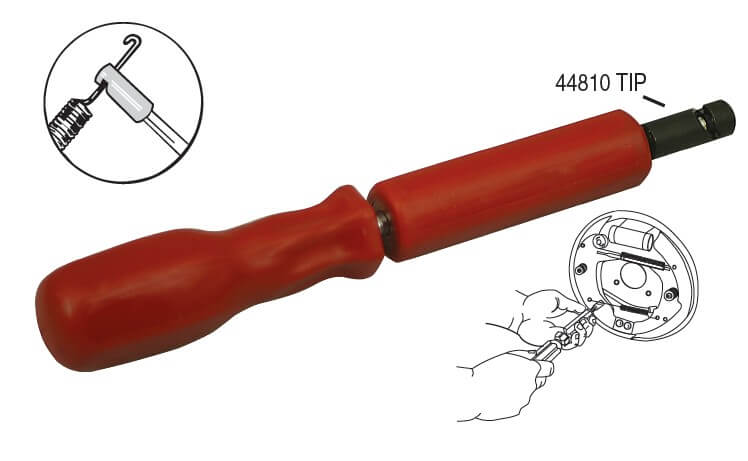
Lisle 44800 brake spring remover tool hooks onto spring and tightens down so it won’t slip as you pull
The Lisle 44800 heavy duty brake spring tool is designed for larger brake springs on drum brakes without an anchor pin. Hook the spring and tighten the rear handle to lock it onto the spring. Then pull to unhook the spring.
The Lisle 45100 brake spring removal tool is designed to remove drum brake return springs found on domestic and import
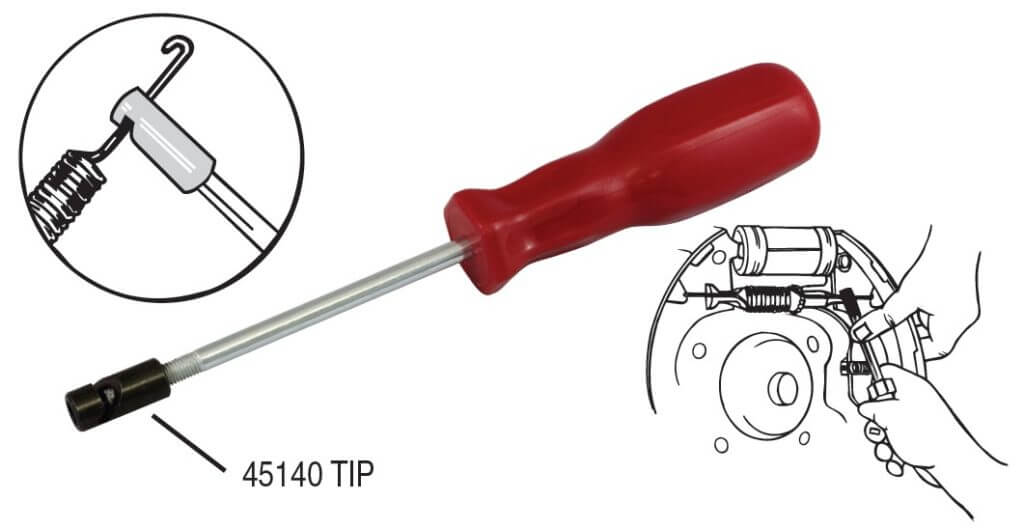
Lisle 45100 tool for drum brakes with no anchor pin used on domestic and import cars
vehicles that don’t use an anchor pin. Hook the spring and turn the handle to lock the spring to the tool. Then pull the spring hook out of place with no slipping.
Remove heavy duty drum brake springs used on GM trucks
GM trucks use a large brake shoe return spring
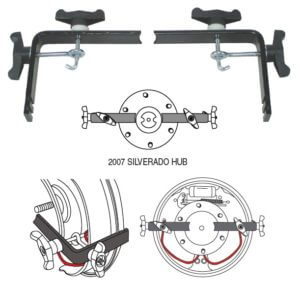
Lisle 50600 Compressor for GM vehicles
that’s difficult to compress and remove without a special tool. The Lisle 50600 single spring compressor fits the large and small springs used on Silverado and Sierra trucks and other vehicles listed below:
Smaller Spring
1991 to current GM H Body Bonneville, LaSabre, Delta, 88
1995 to current Chevrolet Lumina & Monte Carlo
1992 to current GM C & H Body, Buick Electra, Olds 88, Cadillac Fleetwood, Cadillac DeVille, Chevrolet Lumina APV, Pontiac Trans Sport, Olds Silhouette
Larger Spring
2005 to current Chevrolet Silverado, 2004 to current Chevrolet Colorado, Including 2007 Models
Brake shoe hold-down removal tool
Brake shoes are normally held down with either a coiled spring and retaining washer or a spring clip. Use the appropriate tool to remove the retainer
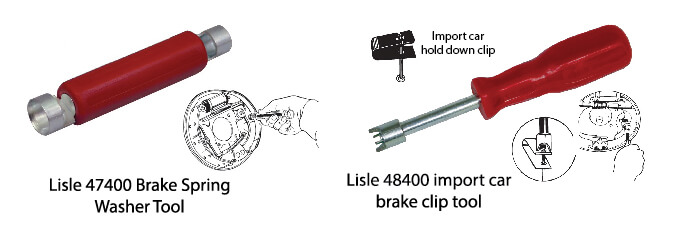
Tips for doing a brake job on drum brakes
1) Always replace the springs and hardware — Brake springs lose their tension due to heat and use. It never pays to reuse old brake springs. If even one spring breaks later on, the loose parts can damage the new brake shoes and even the wheel cylinder.
2) Work on one wheel at a time — There are lots of parts in a drum brake and they all have to go back in place in the exact order. If you disassemble both wheels and don’t remember how everything came apart, you won’t have a reference to go by. If you work on one wheel and get stuck, you can use the other wheel as a reference.
3) Lay the removed springs out in the order your removed them. That way you can install the new springs in the same order.
© 2012 Rick Muscoplat
Posted on by Rick Muscoplat
